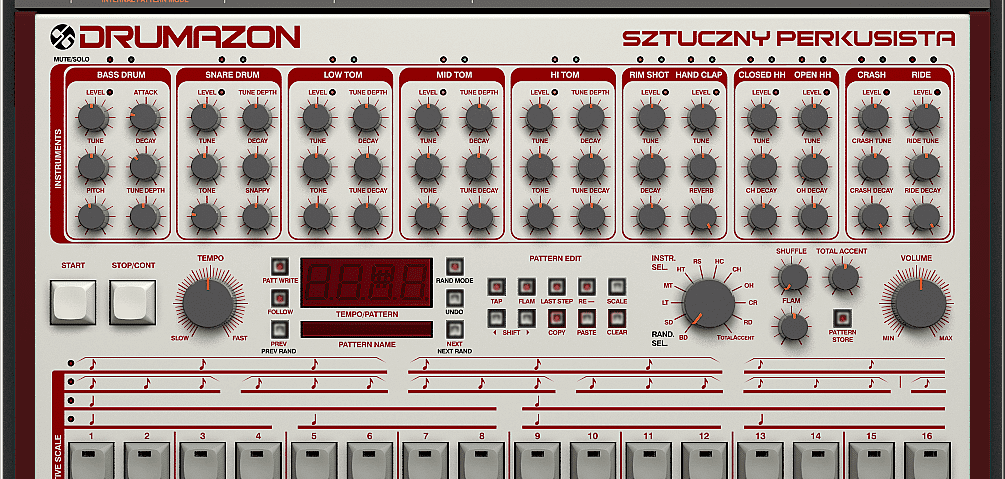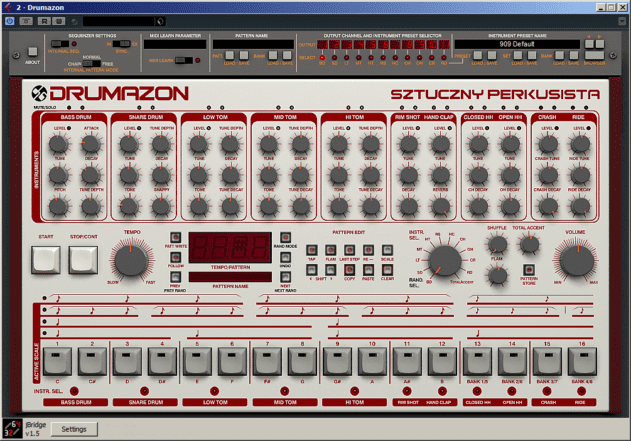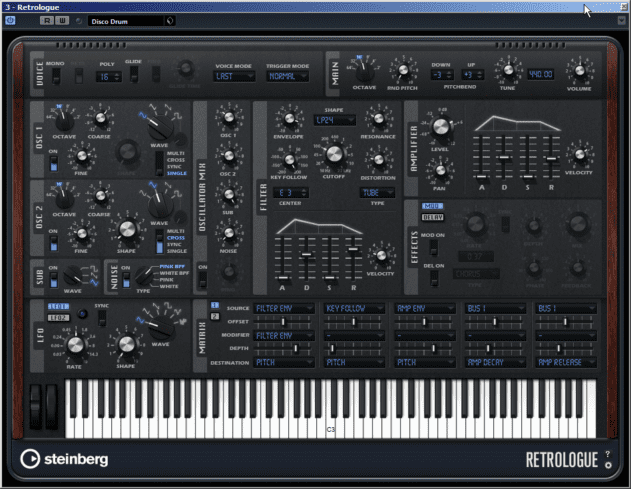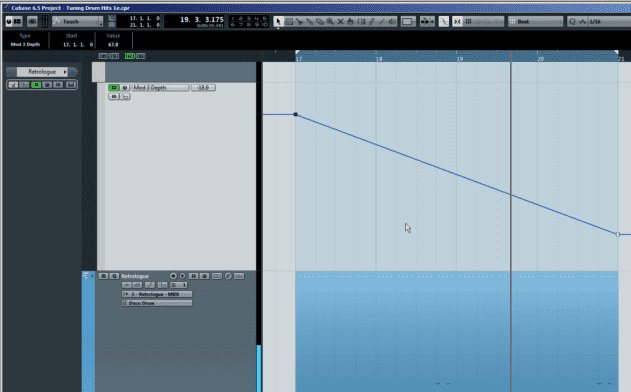Going Tribal
The classic Roland TR-909
drum machine has found favour with many house and techno producers over the years. It also provides a reasonable amount of flexibility when it comes to adjusting the toms (of which there are three – each with their own controls, including tuning). Even if you are using a VST recreation or just samples, its sounds have the ability to be the centrepiece of a tom-led rhythm track. Here we’ll use D16’s Drumazon plugin to create a classic TR-909-inspired house beat.
Roll With It
One of the most flexible approaches to experimenting with tuned drums in an electronic music context is to use a subtractive (analogue-style) synth to generate the sound. Many plugins in fact have ‘Syn Tom’ or ‘Syn Snare’ presets or something similar, which should make a good starting point.
Here we’ve dialled in a classic synth tom sound in Steinberg Retrologue:
From this it’s then possible to pick and choose notes that fit the track, or even create new musical elements:
Synthesised toms are also great for adding movement to a track. You can even use automation to retune them whilst the track plays:
And why not adjust other drum synth parameters using automation as well? Here we’ve automated the filter cutoff on the synth tom track:
Hat Tricks
Retuning of drum hits isn’t just the preserve of toms and kicks. Try experimenting with all the elements. Claps, snares and hi-hats, for example, don’t usually have such a discernible fundamental frequency as kicks and toms but adjusting their pitch can help them to cut through a busy mix more easily.
Drum tuning is a frequently overlooked technique which can make all the difference to your production. A quick play with the tuning controls can have a huge impact. Give it a try and you might just unlock one of the secrets to cleaner mixes and more cohesive tracks.




03.50 PM
🙂 thx! great walkthrough
06.33 AM
So, should we tune the kick the same root note as the baseline? Or 5 semitones apart?
11.16 AM
So the kick drum does not need to tuned to to the same root note of the bass ?or is it ok as long as its in the same scale ?
06.36 PM
Jeezer):
You would want the kick to be in the same as the tonic (root) note. The root note of your key is the anchor of the baseline and is the resolution point for any melodies, so There kick, being the anchor of your drums, and playing every four beats (assuming you’re making 4 on the floor dance music) should be tuned to the root note.
I have a question though…
What octaves should the sub hum of a kick be in? As subwoofers don’t typically go past @125 Hz, I’m guessing Octave 1 or 2?
12.20 PM
You would usually want the kick and bass tuned to the same note as each other , but this doesn’t have to be the root note of the key you’re working in for your track. A lot of dance music actually tunes the sub of the kick and the bass to the 5th note of the scale and it”s common in Techno to actually tune to the 7th note of the scale.
E.g – if you’r track is in F minor, you could tune the kick & bass to C (5th note) or D# (7th note).
As for the octaves, I would say Octave 1, anything higher is probably too high for ‘sub’ bass frequencies?
01.23 AM
This is total bullshit from ppl with no hearing.Up or down a semitone on a kick is NOT going to make your track sound out a tune.Drummers in cover bands don’t retune their kick for each different song!!! Another stupid theory from ppl with no
musical knowledge!!
05.28 AM
How do you tune a full drum beat (for example, to put it in the key of C), when all of the drum hits make the tuner readout bounce all over the place? I understand getting a solid readout when it’s just one drum sound, or one bass sound, but the whole beat alludes me. I’m using the MeldaProduction MTuner in this case.
08.05 AM
I do love when people try and spit in the face of modern audio production techniques. You’re literally suggesting that harmonically unrelated sounds are more pleasant than tuned and harmonically related sounds.